Download 555 Calc NE555 calculator release v1.0, a simple calculator to help choose resistor and capacitor values to get the frequency you’re looking for on a 555 timer.
555 History
The 555 timer IC is an integrated circuit (chip) used in a variety of timer, pulse generation, and oscillator program. The 555 can be used to provide time delays, as an oscillator, and as a flip-flop element. Derivatives provide up to four timing circuits in one package.
Introduced in 1971 by American company Signetics, the 555 is still in widespread use due to its low price, ease of use, and stability. It is now made by many companies in the original bipolar and also in low-power CMOS types. As of 2003, it was estimated that 1 billion units are manufactured every year.
The IC was designed in 1971 by Hans Camenzind under contract to Signetics, which was later acquired by Dutch company Philips Semiconductors (now NXP).
Depending on the manufacturer, the standard 555 package includes 25 transistors, 2 diodes and 15 resistors on a silicon chip installed in an 8-pin mini dual-in-line package (DIP-8).[2] Variants available include the 556 (a 14-pin DIP combining two 555s on one chip), and the two 558 & 559s (both a 16-pin DIP combining four slightly modified 555s with DIS & THR connected internally, and TR is falling edge sensitive instead of level sensitive).
The NE555 parts were commercial temperature range, 0 °C to +70 °C, and the SE555 part number designated the military temperature range, −55 °C to +125 °C. These were available in both high-reliability metal can (T package) and inexpensive epoxy plastic (V package) packages. Thus the full part numbers were NE555V, NE555T, SE555V, and SE555T. It has been hypothesized that the 555 got its name from the three 5 kΩ resistors used within,[3] but Hans Camenzind has stated that the number was arbitrary.[1]
Low-power versions of the 555 are also available, such as the 7555 and CMOS TLC555.[4] The 7555 is designed to cause less supply noise than the classic 555 and the manufacturer claims that it usually does not require a “control” capacitor and in many cases does not require a decoupling capacitor on the power supply. Those parts should generally be included, however, because noise produced by the timer or variation in power supply voltage might interfere with other parts of a circuit or influence its threshold voltages.

Modes
The IC 555 has three operating modes:
Bistable mode or Schmitt trigger – the 555 can operate as a flip-flop, if the DIS pin is not connected and no capacitor is used. Uses include bounce-free latched switches.
Monostable mode – in this mode, the 555 functions as a “one-shot” pulse generator. Applications include timers, missing pulse detection, bouncefree switches, touch switches, frequency divider, capacitance measurement, pulse-width modulation (PWM) and so on.
Astable (free-running) mode – the 555 can operate as an electronic oscillator. Uses include LED and lamp flashers, pulse generation, logic clocks, tone generation, security alarms, pulse position modulation and so on. The 555 can be used as a simple ADC, converting an analog value to a pulse length (e.g., selecting a thermistor as timing resistor allows the use of the 555 in a temperature sensor and the period of the output pulse is determined by the temperature). The use of a microprocessor-based circuit can then convert the pulse period to temperature, linearize it and even provide calibration means.
Bistable – In bistable (also called Schmitt trigger) mode, the 555 timer acts as a basic flip-flop. The trigger and reset inputs (pins 2 and 4 respectively on a 555) are held high via pull-up resistors while the threshold input (pin 6) is simply floating. Thus configured, pulling the trigger momentarily to ground acts as a ‘set’ and transitions the output pin (pin 3) to Vcc (high state). Pulling the reset input to ground acts as a ‘reset’ and transitions the output pin to ground (low state). No timing capacitors are required in a bistable configuration. Pin 5 (control voltage) is connected to ground via a small-value capacitor (usually 0.01 to 0.1 μF). Pin 7 (discharge) is left floating.[5]
Download 555 Calc NE555 calculator release v1.0
The download link for this calculator is not available see this other one:
Download 555 timer component selection

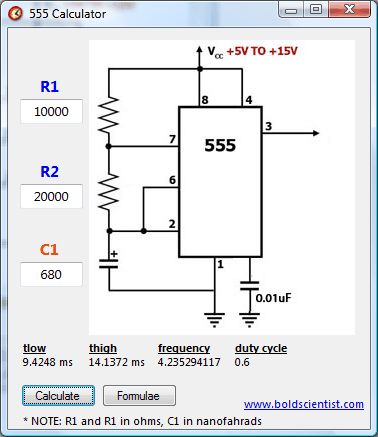

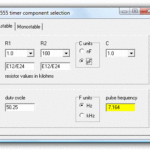
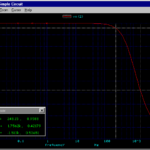
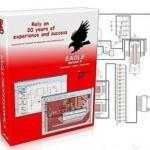
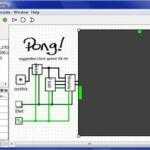

I calculated the Frequency (1/T = 1/23.611ms = 42.35294… Hz ) as well as the standard equations (using displayed component values on site calculator) for the 555 out to be 42.35294… Hz not 4.35294… Hz as the calculator on your site?
Where did is mess up?